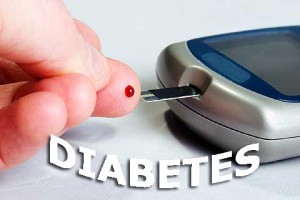As we all know by now, diabetes is a lifestyle disorder that is linked to several other health problems like obesity and heart disease. It is one of the most challenging of health conditions to treat. The latest reports indicate that there are more than 50 million diabetics in India.
A study presented at the National Diabetes Summit 2013 Amritsar, reveals that the number is set to reach 101.2 million by the year 2030, which is alarming, to say the least.
Not surprisingly, pharma companies are in a scramble to come up with more effective drugs to treat the condition. The existing approaches have been directed towards
a) Boosting insulin production
b) Lowering insulin resistance
c) Lowering glucose production by the liver or
d) Slowing down the absorption of carbohydrates by the intestine
Although these drugs have been effective in maintaining blood glucose levels at normal values, they have been ineffective in hindering the progression of the disease. Their efficacy also goes down over time. Side effects have also been a major factor to contend with.
In view of all this, the most recent innovations in diabetes therapy are targeted towards stemming the progression of the disease.
Latest trends in diabetes treatment
The U.S. Food and Drug Administration (FDA) approved 3 drugs to improve blood sugar control in individuals with type 2 diabetes in January 2013.
Alogliptin is the new active ingredient in the new drug Nesina.
ü ‘Alogliptin stimulates the release of insulin after a meal, which leads to better blood sugar control.
ü People with type 2 diabetes do not produce enough insulin or are resistant to insulin, resulting in high blood sugar levels. So effective sugar control is critical in such cases.
ü Consistent high blood sugar levels can increase the risk of diabetes complications including heart diseases, diabetic neuropathy, retinopathy and kidney damage.
Glifozinsor Sodium-glucose co-transporter-2 (SGLT-2) inhibitors
ü Sodium-glucose co-transporter-2 is a membrane protein present which reabsorbs glucose from the urine into the bloodstream.
ü SGLT-2 inhibitors prevent the re-absorption of glucose in the blood, thereby increasing the amount of glucose passed through urine.
ü One such drug called Dapagliflozin has been already been approved for use in Australia and Europe. The safety aspect is still being looked into, but this looks very promising.
Incretins are hormones secreted by the gut within a few minutes of consuming food. One of the functions is to regulate the amount of insulin secreted. Glucagon-like peptide-1 (GLP-1) is one incretin that helps trigger insulin release by the pancreas. Exenatide ( Byetta) and liraglutide (Victoza) are synthetic GLP-1 receptor agonists now being prescribed by diabetologists.
Artificial pancreas or insulin pump with glucose monitoring system
Frequent and regular monitoring of blood glucose levels is an obvious pre-requisite to the effective management of diabetes. The latest breakthrough is the real time glucose monitoring system and insulin pump that recently received FDA approval. The insulin pump is integrated with a real time glucose monitoring device. The insulin pump delivers precise amounts of insulin on the basis of blood sugar levels monitored by the glucose monitoring system, thus acting like an artificial pancreas. The European made MiniMed Paradigm Veo from Medtron Inc. is a device that comes closest to the artificial pancreas.
Reference: Treatments for diabetes – the latest advances including Glifozins, Incretins, DPP-4 inhibitors & more Shraddha Rupavate November 20, 2013 http://health.india.com/diseases-conditions/treatments-for-diabetes-the-latest-advances-including-glifozins-incretins-dpp-4-inhibitors-more/
